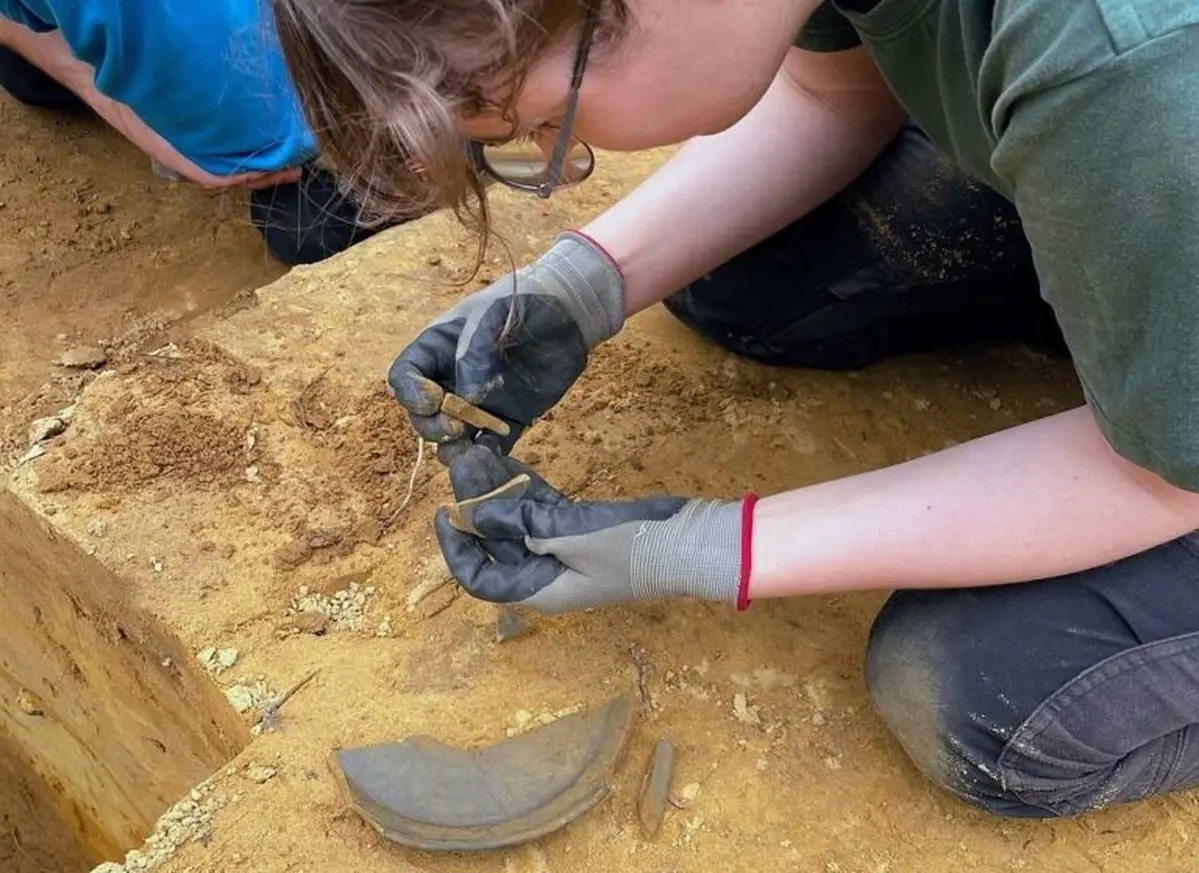 But the discoveries made by the team of young researchers didn’t stop there. During four weeks of at the site of the ancient Roman military base Aliso, the team also uncovered fragments of a wine amphora, a bronze spoon, and pieces of exquisite Terra Sigillata tableware.
But the discoveries made by the team of young researchers didn’t stop there. During four weeks of at the site of the ancient Roman military base Aliso, the team also uncovered fragments of a wine amphora, a bronze spoon, and pieces of exquisite Terra Sigillata tableware.
The Aliso outpost was one of the most significant for the Romans in the region north of the Alps. As Bettina Tremmel, an expert in ancient Roman culture at the Landscape Association of Westphalia-Lippe (LWL), noted, it remains unclear what type of structure the researchers were excavating—whether it was a soldiers’ barracks or a house with an atrium.
“However, one of the pits discovered likely served as a kind of refrigerator—an ancient storage space that the Romans used to keep food and drinks,” Dr. Tremmel believes.
Traces of Roman Soldiers’ Lives in the Fortress
The excavation site in Haltern am See is known to scientists as a window into the daily lives of Roman soldiers and settlers in what is now modern Germany. The excavations revealed not only remnants of structures but also household items that shed light on the everyday life of the military camp. The bronze spoon and fragments of wine amphorae indicate the consumption of imported goods, particularly Mediterranean wines transported in large amphorae to the border provinces of the .

The exquisite Terra Sigillata pottery with its red glaze was considered a sign of luxury among the ancient Romans. It was affordable only to officers, wealthy merchants, and aristocrats, as reported by Arkeonews. The students also discovered gaming tokens and coins, which provided insight into the leisure activities and financial aspects of the lives of the legionnaires.

The Roman ‘Refrigerator’: Simple and Effective
One of the most intriguing finds was the cooling pit. Such pits were used throughout the Roman Empire for storing perishable goods, from cheese and meat to wine and fruits. These “refrigerators” were typically dug into the ground, and sometimes lined with clay or stone to help maintain a cool temperature.
In border provinces like Germany, where the climate was cooler, simple pits were often sufficient. The pit discovered in Haltern am See was likely covered with wooden planks and filled with straw or sand.
“The Romans demonstrated remarkable ingenuity in matters of . Such discoveries show that even in northern military outposts, they adapted their technologies and daily habits to local conditions,” noted Professor Eckhard Deschler-Erb, who led the excavations.

Traces of a Dramatic Finale
Another significant observation by the researchers concerns the exceptionally deep postholes found in several locations around the camp. Dr. Tremmel suggested that these might be evidence of a hasty departure by the legionnaires from the camp. “The trenches widened as the posts were pulled out; initially, burned the wooden posts and then removed their remains,” the scientist explained. This urgent departure may coincide with the tumultuous years for the Romans following the battle with Germanic tribes in the Teutoburg Forest (9 AD), when the empire’s forces suffered significant losses and retreated from these lands.
The new archaeological findings in Haltern am See vividly illustrate how Roman soldiers adapted to life on the far fringes of the empire.
